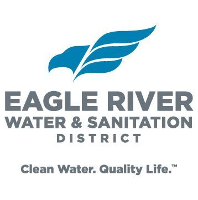How UK Export Finance is supporting ethnic minority-led businesses to go global – Business Insider
Report on UK Export Finance Support for Ethnic Minority-Led Businesses and Alignment with Sustainable Development Goals
Executive Summary
This report examines the role of UK Export Finance (UKEF), a government export credit agency, in fostering international growth for ethnic minority-led businesses (EMBs) in the United Kingdom. The initiative directly supports the achievement of several United Nations Sustainable Development Goals (SDGs), particularly SDG 8 (Decent Work and Economic Growth), SDG 10 (Reduced Inequalities), and SDG 9 (Industry, Innovation, and Infrastructure). By providing critical financial guarantees and loans, UKEF addresses systemic barriers faced by EMBs, thereby promoting inclusive economic prosperity and enhancing their contribution to the national economy.
Economic Significance and Systemic Barriers for EMBs
Ethnic minority-led businesses are a vital component of the UK economy, yet they face significant hurdles that impede their growth potential, particularly in international markets. This situation presents a challenge to the principles of inclusive growth outlined in the SDGs.
- Economic Contribution: EMBs contribute between £25 billion and £74 billion in Gross Value Added (GVA) annually and are responsible for over three million jobs, directly supporting SDG 8.
- Financial Exclusion: A primary barrier is access to finance. Data indicates a reluctance among EMBs to seek traditional bank loans, with a report from Lloyds Bank noting that only 12% of Black business owners approach banks for support. This disparity hinders progress towards SDG 10.
- Untapped Potential: The lack of adequate financial backing prevents many viable EMBs from scaling their operations and entering export markets, limiting their capacity for innovation and job creation (SDG 9 and SDG 8).
UKEF’s Strategic Intervention and Contribution to the SDGs
UKEF’s strategy is explicitly designed to bridge the financial gap for underrepresented businesses, creating a more equitable economic landscape in line with SDG 10.
Key Financial Mechanisms
- General Export Facility: This facility provides a partial guarantee to banks, unlocking working capital for businesses to cover export-related costs. This support is crucial for SMEs to build resilience and achieve sustained growth (SDG 8).
- Direct Lending Facility: UKEF offers direct loans to overseas buyers for purchasing UK goods and services, stimulating international trade and supporting UK industries (SDG 9).
Case Studies: Fostering Innovation and Inclusive Growth
Several EMBs exemplify how targeted financial support can translate into sustainable growth and international expansion.
- 3TOP Aviation: Specializing in aircraft trading and refurbishment, this EMB secured a £20 million trade-finance facility through a UKEF guarantee. This backing strengthens its global position, contributing to sustainable industrial practices (SDG 9) and creating high-value employment (SDG 8).
- Bioma.me: A diagnostics and wellness clinic co-founded by Manjinder Virk, this company is expanding into the Middle East with UKEF’s assistance. This venture not only drives economic growth (SDG 8) but also promotes global health and well-being (SDG 3).
- GuDee: A startup producing natural protein supplements from West African Egusi seeds, GuDee aims to expand into the EU market. UKEF support for such ventures promotes sustainable consumption patterns and diversifies the UK’s export portfolio (SDG 12 and SDG 8).
Conclusion: Advancing Sustainable Development Through Inclusive Trade
UKEF’s commitment to supporting ethnic minority-led businesses is a powerful implementation of public-private partnerships (SDG 17) aimed at achieving sustainable development. By ensuring that viable UK exports do not fail due to a lack of finance, UKEF directly addresses economic disparities and empowers underrepresented entrepreneurs. This targeted approach is fundamental to building a more resilient, innovative, and inclusive economy, making significant strides towards fulfilling the ambitions of the Sustainable Development Goals.
Analysis of Sustainable Development Goals in the Article
-
Which SDGs are addressed or connected to the issues highlighted in the article?
The article addresses several Sustainable Development Goals (SDGs) by focusing on economic growth, equality, and partnership, particularly for ethnic minority-led businesses (EMBs) in the UK.
- SDG 8: Decent Work and Economic Growth: The article highlights the significant economic contribution of EMBs, which “contribute between £25 billion and £74 billion in Gross Value Added (GVA) each year” and “employ more than three million people.” The support from UK Export Finance (UKEF) aims to foster their growth, leading to increased productivity, revenue, and resilience, which are central to SDG 8.
- SDG 9: Industry, Innovation, and Infrastructure: The core of the article is about increasing access to finance for small businesses to help them innovate and expand. UKEF’s provision of a “£20 million trade-finance facility” and its General Export Facility are direct mechanisms to support small-scale enterprises, a key aspect of SDG 9.
- SDG 10: Reduced Inequalities: The article explicitly focuses on the challenges faced by EMBs, noting that they “often lack the financial support to reach their export potential.” The initiative by UKEF is a targeted action to reduce the financial inequalities faced by these businesses, promoting their economic inclusion. The statistic that “just 12% of Black business owners turn to banks” underscores the existing disparity that this program aims to address.
- SDG 17: Partnerships for the Goals: The entire initiative described is a public-private partnership. UKEF, a government agency, is collaborating with private sector banks and directly with EMBs like 3TOP Aviation and Bioma.me to achieve shared goals of economic prosperity and export growth. This collaboration is a prime example of the partnerships promoted by SDG 17.
-
What specific targets under those SDGs can be identified based on the article’s content?
Several specific SDG targets can be linked to the actions and outcomes described in the article.
- Target 8.3: “Promote development-oriented policies that support productive activities, decent job creation, entrepreneurship, creativity and innovation, and encourage the formalization and growth of micro-, small- and medium-sized enterprises, including through access to finance.” UKEF’s mission to ensure “no viable UK export fails due to a lack of finance or insurance” and its provision of loan guarantees and direct lending directly supports the growth of SMEs like 3TOP Aviation and GuDee by improving their access to finance.
- Target 9.3: “Increase the access of small-scale industrial and other enterprises… to financial services, including affordable credit, and their integration into value chains and markets.” The article details how UKEF’s financial products, such as the General Export Facility, help small businesses “gain access to trade finance facilities” and expand into overseas markets, thereby integrating them into global value chains.
- Target 10.2: “By 2030, empower and promote the social, economic and political inclusion of all, irrespective of… race, ethnicity, origin…” UKEF’s stated commitment to “support more businesses owned and run by ethnic minorities” is a direct action to empower and promote the economic inclusion of a specific demographic group that faces unique challenges.
- Target 17.17: “Encourage and promote effective public, public-private and civil society partnerships…” The collaboration between the government export credit agency (UKEF) and private EMBs is a clear example of a public-private partnership designed to foster economic growth and international trade.
-
Are there any indicators mentioned or implied in the article that can be used to measure progress towards the identified targets?
Yes, the article contains several quantitative and qualitative indicators that can be used to measure progress.
- Financial Support Mobilized: The “£20 million trade-finance facility” secured by 3TOP Aviation is a direct indicator of the amount of financial support being unlocked for EMBs. Tracking the total value of such facilities provided by UKEF would measure progress towards Target 9.3.
- Contribution to Gross Value Added (GVA): The article states that EMBs contribute “between £25 billion and £74 billion in GVA each year.” An increase in this range over time would be an indicator of success in promoting economic growth under SDG 8.
- Employment Figures: The fact that EMBs “employ more than three million people” is a key indicator. Growth in this number would demonstrate progress in job creation as per Target 8.3.
- Access to Finance for Minority Groups: The statistic that “just 12% of Black business owners turn to banks” serves as a baseline indicator of inequality. An increase in this percentage or a rise in the number of EMBs successfully securing finance through programs like UKEF’s would indicate progress towards Target 10.2.
- Export Revenue Growth: The goal of the startup GuDee to “triple revenue via exports” is an example of a business-level performance indicator. Aggregating such data across all supported businesses would measure the effectiveness of the export finance program.
-
Create a table with three columns titled ‘SDGs, Targets and Indicators” to present the findings from analyzing the article.
SDGs Targets Indicators SDG 8: Decent Work and Economic Growth 8.3: Promote policies to support SMEs, entrepreneurship, and job creation through access to finance. - Contribution to Gross Value Added (£25bn – £74bn annually).
- Number of people employed by EMBs (over 3 million).
- Business revenue growth (e.g., plan to triple revenue via exports).
SDG 9: Industry, Innovation, and Infrastructure 9.3: Increase the access of small-scale enterprises to financial services and their integration into markets. - Value of financial facilities provided (£20 million trade-finance facility).
- Number of businesses accessing trade finance through government guarantees.
SDG 10: Reduced Inequalities 10.2: Empower and promote the economic inclusion of all, irrespective of ethnicity. - Percentage of minority-owned businesses seeking/receiving bank support (baseline of 12% for Black business owners).
- Number of EMBs supported by targeted government programs.
SDG 17: Partnerships for the Goals 17.17: Encourage and promote effective public-private partnerships. - Number of partnerships between government agencies (UKEF) and private businesses (EMBs).
- Roundtable events and collaborative initiatives bringing public and private sectors together.
Source: businessinsider.com
What is Your Reaction?
 Like
0
Like
0
 Dislike
0
Dislike
0
 Love
0
Love
0
 Funny
0
Funny
0
 Angry
0
Angry
0
 Sad
0
Sad
0
 Wow
0
Wow
0




















































.jpg.webp?itok=0ZsAnae9#)

























